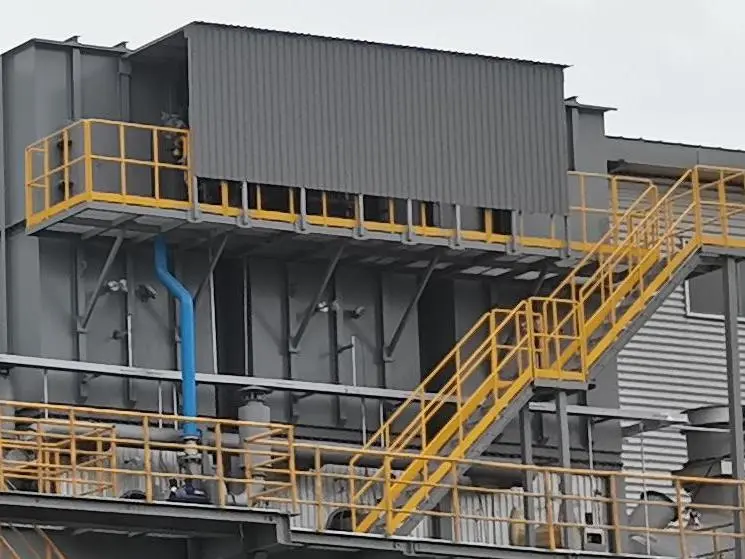
The Bed RTO is traditional type of RTO, usually equipped with 3 regenerative chambers. If the waste gas volume is large, 5 or 7 regenerative chambers can also be equipped.
The combustion chamber is where the actual oxidation process takes place. Here, the flammable exhaust gases are heated to a temperature, causing them to break down into carbon dioxide and water vapor. The precise temperature and residence time within the combustion chamber are carefully controlled to ensure complete destruction of the pollutants.
Poppet valves play a crucial role in directing the flow of exhaust gases through the system. By alternately switching the positions of these valves, the exhaust gases are cycled through different regenerative chambers. This alternating flow pattern ensures that each chamber has an opportunity to both absorb and release heat, maintaining a consistent and efficient thermal cycle.
In scenarios where the concentration of flammable gases in the exhaust stream is sufficiently high, an additional waste heat recovery system can be integrated into the RTO setup. This system captures the residual heat from the purified exhaust gases and uses it for other processes, such as generating steam or preheating process air. By doing so, the overall energy efficiency of the facility is further enhanced, contributing to both economic and environmental benefits.
Overall, the bed RTO technology represents a robust and versatile solution for managing industrial emissions, offering a sustainable approach to environmental compliance while maximizing resource utilization.

Features
1.The traditional Regenerative Thermal Oxidizer (RTO) structure is characterized by its PLC (Programmable Logic Controller) automatic control system, which ensures a stable and reliable operation. This advanced control mechanism allows for precise monitoring and adjustment of various operational parameters, thereby maintaining optimal performance under different conditions. The PLC system can also be programmed to handle specific process requirements, further enhancing the flexibility and efficiency of the RTO.
2.One of the key features of this RTO design is the inclusion of three or more regenerative chambers, each filled with ceramic materials that facilitate direct heat exchange with the gas stream. These ceramics are specifically chosen for their high thermal conductivity and durability, ensuring efficient heat transfer and long-lasting performance. The multi-chamber configuration allows for rapid heating and cooling cycles, maximizing the recovery of heat from combustion products. This not only improves energy efficiency but also reduces overall operating costs. For instance, in industries such as automotive manufacturing or chemical processing, where large volumes of exhaust gases need to be treated, this design proves particularly beneficial.
3.To manage the flow direction within the system, multiple poppet valves are employed. These valves, actuated by pneumatic cylinders, provide quick and reliable switching between the heat storage and release functions of the regenerative chambers. The use of poppet valves ensures minimal pressure drop and excellent sealing properties, even at high temperatures. This feature is crucial for maintaining the integrity of the heat exchange process and preventing any potential leaks. In addition, the high-temperature resistance of these valves makes them suitable for demanding industrial applications, such as waste incineration or petrochemical processing.
4.The RTO equipment can be customized according to specific site requirements, with dimensions tailored to fit available space constraints. This customization option not only facilitates easier transportation and installation but also ensures that the unit can be integrated seamlessly into existing facilities. For example, in retrofit projects where space is limited, the ability to adjust the size and layout of the RTO can significantly simplify the integration process. Moreover, customizing the equipment allows for optimization based on the specific needs of the facility, such as handling varying exhaust gas flows or integrating with other pollution control systems.
5.The RTO system exhibits strong adaptability, making it well-suited for complex operating conditions involving high-concentration and multi-component exhaust gases. Its robust design can accommodate fluctuations in gas composition and volume, ensuring consistent performance across a wide range of applications. Industries such as pharmaceuticals, food processing, and coatings often deal with diverse and challenging exhaust streams, and the RTO's versatility allows it to effectively treat these emissions while meeting stringent environmental regulations. This adaptability also extends to handling varying operating temperatures and pressures, further enhancing its reliability in dynamic industrial environments.